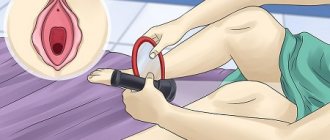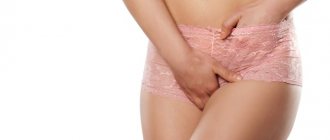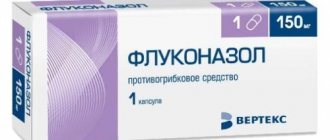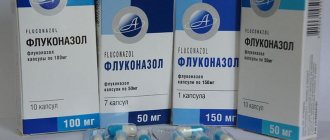Levomekol is a universal, inexpensive antibacterial agent. It is used for wounds, burns, ulcers, bedsores, mastitis in gynecology, urology. Effective as an antibacterial agent against wound infections.
According to the instructions for use, Levomekol ointment is used in gynecology, surgery, dentistry, dermatology and even veterinary medicine. The drug is popular due to its wound-healing, antibacterial, anti-inflammatory, and antiviral effects.
The ointment destroys pathogenic bacteria, viruses, some cocci, stops purulent discharge, and accelerates the healing process. It is used mainly on fresh wounds to prevent complications and suppuration.
Every woman should have this product in her medicine cabinet to treat genital diseases.
Levomekol
Levomekol is an ointment for local application with an anti-inflammatory effect that destroys intestinal, Pseudomonas aeruginosa, and staphylococci. Penetrating into the deep epidermal layers, the ointment accelerates healing, but does not disrupt biological membranes. Retains an antibacterial effect also in purulent inflammations.
Heals wounds, burns, activates tissue restoration. It is used externally to destroy viral and microbial infections and activate the synthesis of immunostimulants. For open wounds, surgery, and in gynecology it is used to prevent pathogenic flora. These are the main points that Levomekol helps with. It is also used for other purposes, for example, to eliminate wrinkles.
Compound
The main components of Levomekol ointment:
- Chloramphenicol 7.5 mg. An antibiotic used externally to treat trophic ulcers, infected burns, cracked nipples, boils, bacterial skin infections, wounds. It is active against chlamydia, bladder infections, purulent peritonitis, wound infections, due to which it has found application in gynecology.
- Macrogol 400 and 1500 are excipients.
- Methyluracil 40 mg is a component that stimulates tissue regeneration, enhancing the restoration of tissue and cellular structures. Accelerates the restoration of mucous membranes and skin. It is used in the treatment of burns, poorly healing wounds, cuts, fractures, bedsores, and for the treatment of postoperative sutures.
Mechanism of action
The ingredients Chloramphenicol and methyluracil guarantee the therapeutic effect of Levomekol ointment.
The medicine acts on the integument and mucous membranes in the following way:
- destroys pathogenic microbes;
- disrupts protein synthesis in bacteria;
- blocks enzymes of microbial cells;
- prevents vital activity and proliferation of harmful microorganisms;
- eliminates burning sensation;
- destroys spirochetes, E. coli, Proteus, enterobacteria, streptococci, salmonella, staphylococci, yersinia, gonococci, chlamydia, strains that cannot be treated with antibiotics, some viruses, meningococci, anaerobic microorganisms;
- stimulates the skin's defenses;
- activates metabolism;
- relieves the inflammatory process;
- heals mucous membranes and skin.
Indications for use
Levomekol ointment has proven itself well as a bactericidal, anti-inflammatory, antiviral, and regenerative agent. Therefore, it is used in dermatology, gynecology, surgery, veterinary medicine, urology, dentistry and other industries.
- In gynecology, Levomekol is used for salpingitis, cervical erosion, bacterial vaginosis, bacterial colpitis, vulvitis of various origins, genital herpes, vaginal dysbiosis, gonorrhea, injuries to the skin and mucous membranes, candidiasis.
- Proctologists recommend Levomekol for hemorrhoids to destroy bacteria and inflammation. The ointment restores the mucous membrane.
- Ophthalmologists also use this remedy in the complex therapy of conjunctivitis.
- In surgery, Levomekol is applied to fresh sutures to avoid suppuration, infection, and for healing.
- Dermatologists have found the use of ointments for inflammation, boils, acne, swelling, abscesses, insect bites, cuts, any wounds, burns, abscesses, bedsores. Stops the purulent process in the presence of trophic ulcers, ulcers caused by diabetes, gangrene. Heals cracked nipples, treats mastitis.
Contraindications and side effects
Avoid using Levomekol ointment in the following cases:
- lymphogranulomatosis (malignant tumors on lymphoid tissue);
- malignant bone marrow diseases;
- chronic, acute forms of leukemia;
- hemoblastosis;
- personal intolerance to ingredients;
- wound granulation (healing stage);
- age up to 3 years.
Overdose
There are no cases of overdose of the drug, because the ointment is used externally. The second factor is the low toxicity of the product. Due to this, Levomekol is used even during pregnancy and lactation.
special instructions
Levomekol is an ointment that is effective at the primary stage of skin trauma, until granulation tissue appears. It should be applied only to treat the wound surface in the stage of inflammation, when there is increased local temperature, swelling, redness, and pain. In subsequent phases, when the healing process has begun, Levomekol is replaced with other means. In these cases, the ointment can negatively affect young skin cells, leading to their dehydration.
Regardless of the size of the treated area, the amount of ointment should not exceed 3 g per day.
General characteristics of the medicine
Levomekol is sold in pharmacies in the form of an ointment. The medicine contains 2 medicinal components: Dioxomethyltetrahydropyrimidine, Chloramphenicol. Dioxomethyltetrahydropyrimidine accelerates cell regeneration. Chloramphenicol actively fights bacterial agents (pseudomonas, gonorrheal infection, staphylococci, Escherichia and other bacterial agents that affect the skin and mucous membranes). The drug penetrates well into the skin and underlying tissues. The medicine does not damage the cell structure.
Indications for the use of Levomekol:
- wounds, burns, frostbite;
- furuncle;
- bedsores;
- anal fissures and hemorrhoids;
- wound suppuration after surgery;
- acne;
- trophic ulcers with varicose veins;
- herpes;
- lymphadenitis;
- diseases of the genital area (vulvitis, cervical erosion, vaginitis, colpitis of bacterial origin).
Levomekol can be applied to the mucous membrane of the labia for vulvitis. The medicine fights pathogens of sexually transmitted infections well, reduces inflammation, and reduces itching. The drug can be used on the eve of cauterization of cervical erosion. The product is very effective for bacterial colpitis. The medicine can treat small wounds and post-operative wounds on the labia. It is allowed to use the medicine in adolescents with inflammation of the genital tract (vulvitis, vaginitis). Levomekol helps well against itching in the intimate area due to a bacterial infection of the genital area.
The product is not indicated for children under 3 years of age. The medicine is not used in patients with eczematous and psoriatic elements on the skin. The ointment should not be prescribed if you have a fungal infection of the skin and genitals, or if you are allergic to the ingredients of the product.
After applying the drug, allergic rashes, Quincke's edema, burning, itching, and swelling may occur. If the medicine is poorly tolerated, it is better to stop it and consult a doctor. If angioedema occurs, an ambulance should be called. It is allowed to use the medicine during pregnancy or breastfeeding, if the benefit to the mother outweighs the risk to the baby.
Levomekol ointment in gynecology
In gynecology, the drug Levomekol is used for ruptures after childbirth, treatment of sutures, vaginally in tampons or suppositories.
Levomekol is used in the treatment of the following gynecological diseases:
- genital herpes;
- salpingitis;
- colpitis;
- vaginosis;
- cervical erosion;
- thrush;
- vaginal dysbiosis;
- vulvitis;
- vaginitis
Instructions for use
- For small wounds, boils, acne, Levomekol is applied pointwise to the surface of the lesion in a thin layer, if they do not require dressing. You can repeat the procedure 1-2 times a day for a maximum of 14 days.
- For large areas of damage or burns, apply the ointment loosely and generously onto a cloth or napkin. When applying it to a problem area, be sure to secure it with a bandage. Change the dressing with Levomekol once a day. Treatment lasts no more than 2 weeks.
- Suppositories can be administered rectally and vaginally 4 times a day, 1 pc. up to 14 days.
- Tampons are inserted into the vagina for 2-3 hours during the day or overnight. The course of treatment is up to 12 days.
Tampons with levomekol
There are several ways to make tampons with Levomekol. You can purchase sanitary tampons or make them yourself. The second option is preferable. Twist a cotton strand the size of an ordinary tampon, wrap it in a gauze napkin or bandage so that the free edge is inside. Please note that there are no protruding threads. The free edge is tied into a knot; it will remain outside for removal.
The rolled-up tampon must be moistened in Levomekol, then inserted into the vagina so that the edge remains outside. Before each use, prepare a new tampon with Levomekol.
When recommending procedures, the doctor must indicate how long to keep the tampon in place. It can be inserted for 2-3 hours or overnight. The course of treatment usually lasts no more than 12 days.
Efficiency
Levomekol ointment is effective against strains, bacteria, viruses, relieves swelling, inflammation, normalizes local metabolism and immunity. After 2-3 days of use, the wound stops festering, swelling and inflammation go away. In gynecology, to obtain an effect, treatment is longer - 8-12 days.
Similar article - Why do you drink Cavinton?
Mode of application
Instructions for use of the ointment contain information to familiarize yourself with the composition of the drug, indications, and existing restrictions. The treatment regimen is developed by the doctor according to the medical history after reviewing the test results.
The classic scheme for using medicine to treat a wound surface involves a course of treatment for 10 days. Sometimes doctors insist on longer treatment. In this case, it is necessary to take into account the fact that prolonged exposure to chloramphenicol provokes the appearance of a hypersensitivity reaction upon repeated use, regardless of the form of application. Further treatment is continued with agents that promote regeneration of the wound surface.
Before starting therapy, the affected area is cleaned. Then they are treated with antiseptic solutions. The following drugs can be used as antiseptics:
- Miramistin;
- Furacilin;
- Fukortsin;
- methylene blue solution;
- brilliant green solution;
- potassium permanganate solution;
- hydrogen peroxide.
The disinfected area must be sufficiently dry before further treatment with ointment. Air baths are used for 5-10 minutes.
Wound treatment is carried out in the form of applications. A sterile bandage is folded into several layers and soaked in ointment. After removal from the refrigerator, the ointment is heated to body temperature (36-37 degrees) to soften it. Applications are changed several times a day (as recommended by a doctor) until the wound surface is completely healed. Despite the presence of purulent contents, Levomekol is effective. To prevent ointment from contaminating linens, use sanitary pads or additional gauze wipes.
At the pharmacy you can buy VoskoPran with Levomekol ointment. This is a sterile dressing made of synthetic mesh impregnated with a drug. It is very convenient to use, as it can be modeled on wounds of any configuration. Its mesh structure promotes free air exchange and drainage of purulent exudate. The synthetic ointment base prevents gauze fibers from entering the wound and prevents injury to the wound when removing the bandage.
Tampons with Levomekol are used in gynecology in the presence of inflammatory processes in the vagina, ovaries, uterus and fallopian tubes. If in the vagina the medicine acts directly on the source of inflammation, then when treating distant organs, the effect is expected after the penetration of the active substance through the vaginal mucosa.
Given the insignificant penetration of the drug into the systemic circulation, the use of local therapy is not limited to. In some cases, the use of systemic antibacterial agents is indicated.
Analogues of levomekol
If necessary, Levomekol can be replaced with other drugs for external use.
- Salicylic-zinc paste, which contains levomecithin, has an astringent, disinfecting, drying, and antimicrobial effect. Treats skin diseases. Combined gel for topical use.
- Levosin ointment is active against gram-negative and gram-positive microorganisms. Acts as an anti-inflammatory, necrolytic, analgesic agent. It is effective for burns and the purulent-necrotic phase of wound lesions.
- Protegentin is an ointment with an antiseptic effect. Applicable in the treatment of purulent-inflammatory diseases, bedsores, infected burns, inflammation of the genital organs, trophic ulcers, frostbite, bursitis.
- Lingesin is an ointment with a proteolytic and antibacterial effect. Applied for the treatment of purulent-inflammatory processes in the oral cavity and gums.
- Fastin 1 with furatsilin is used in the treatment of pyoderma, purulent wounds, burns. Has antimicrobial, local anesthetic effect.
- Streptonitol in the form of an ointment has a therapeutic effect for acne, bedsores, purulent infection, burns, pyoderma, and atopic dermatitis. Indicated for diabetic gangrene, trophic ulcers, postoperative, purulent wounds in the inflammatory phase.
- Solcoseryl heals ulcers, erosions on the mucous membrane, treats damage, dried wounds, 1-2 tbsp burns. The cream is suitable only for granulation wounds, and the ointment is suitable for wet ones. It has antihypoxic, wound-healing, cytoprotective, regenerating effects.
- Furacilin ointment is used to treat eczema, otitis, dermatitis, bedsores, ulcers, burns, festering wounds, boils. Destroys bacteria, heals, disinfects.
Wounds in intimate places worsen the quality of life of patients and are accompanied by pain, itching, and burning. Depending on the nature of the formations, single and multiple ulcers are formed. A timely visit to a doctor will allow you to identify the cause of the disease and prescribe the correct treatment.
Pharmacological properties
Levomekol has a triple effect on problem areas of the skin and mucous membranes:
- wound healing;
- antiseptic;
- anti-inflammatory.
The main component, chloramphenicol, has a bacteriostatic effect on pathogenic microorganisms, that is, it destroys cellular connections and protein biosynthesis mechanisms inside the bacterium. The active substance is an antibiotic of synthetic origin. The closest analogue of this compound is natural metabolites of the group of streptomycetes.
Levomekol activates the body's dehydration mechanism. The final effect becomes much stronger compared to hypertonic solutions. The product eliminates the root cause of infectious pathologies, destroying harmful microorganisms and structures that contribute to the development of purulent and inflammatory processes.
The maximum activity of the drug was noted in relation to the following bacteria:
- spirochetes;
- chlamydia;
- typhoid fever sticks;
- various infections of meningococcal origin;
- Haemophilus influenzae;
- rickettsia and brucella.
Minimal activity was recorded in relation to the simplest structures, clostridia, and Pseudomonas aeruginosa.
The drug is characterized by an average level of resistance, without the effect of cross-resistance. The process itself activates very slowly.
Another active component of Levomekol is methyluracil. This is a derivative of pyrimidine - the basis for the formation of a nucleic acid molecule. This substance has a pronounced healing effect. It has a positive effect on the general condition of the body, stimulates the functions of humoral and cellular immunity.
After reaching a therapeutic concentration, effectiveness remains for 20-24 hours. A small part of the medicine passes through the skin and mucous membranes. No pronounced cumulative effect was found in these places.
Sores on the genitals and their code according to ICD-10
In women, wounds form on the labia, perineum, pubis, at the entrance to the vagina, in men - inflammation of the frenulum of the genital organ, scrotum, and testicles.
ICD-10 code depending on the cause of formation:
- S30-S39 – injuries to the abdomen, lower back, lumbar region, spine and pelvis. The section includes injuries to external intimate organs and the groin.
- A50-A64 – infections transmitted primarily through sexual contact.
- N40-N51 – diseases of the male genital organs.
Reasons for the formation of wounds in intimate places
The treatment regimen depends on the cause that caused the negative symptoms. When making a diagnosis, a medical history is taken, an examination is performed, and laboratory tests are prescribed.
Causes of wound formation:
- allergic dermatitis occurs as a result of wearing tight underwear made of synthetic material, low-quality intimate hygiene products, allergies to condoms;
- injuries after sexual intercourse;
- cuts from shaving;
- diseases: viral, infectious, fungal;
- extensive injuries of a domestic and industrial nature, punctures, incised wounds of the intimate areas.
Side effects
After a one-time application, Levomekol increases burning and itching. The unpleasant sensation goes away 2-3 hours after the first application.
Ointment that gets inside provokes negative side reactions, including a sharp decrease in platelets, leukocytes and hemoglobin.
During complex and individual therapy, the following undesirable consequences are possible:
- dermatitis of various etiologies;
- severe, wave-like headache;
- aplastic anemia.
Less commonly, allergic reactions, redness of the skin, and urticaria occur. In isolated cases, the development of superinfection and swelling of angioedema etiology is allowed.
Symptoms of the appearance of wounds on the mucous membrane in women and on the penis in men
Wounds on intimate organs are distinguished by the nature of the formation: superficial, deep, infected. The lesions can be open (weeping, pus, blood) or crusty.
Symptoms of wounds in intimate places in women and men, depending on the disease (condition):
Disease (condition) that caused the wounds
Symptoms are complicated in the presence of concomitant diseases: diabetes mellitus, metabolic disorders, STDs.
Review of drugs for the treatment of wounds
For bacterial, viral and fungal diseases, both partners are treated. In order to avoid negative consequences and complications during therapy, it is necessary to abstain from sexual intercourse and maintain hygiene of intimate organs.
Treatment is complex and includes taking local medications: ointments, gels, suppositories.
Features of the drugs, for the treatment of which wounds they are used
Review of healing ointments:
- Solcoseryl is a medicine based on the blood of calves obtained by hemodialysis. The healing process of damage in intimate areas is accelerated by stimulating collagen production and improving glucose transport into metabolically depleted cells and tissues. The medicine is available in the form of a gel, ointment and solution for injection. The gel is used for rapid granulation and release of purulent contents from the wound. The ointment is used when the damaged area dries out.
- Levomekol - effectively treats wounds on the head of the penis, and is also used after gynecological operations. The ointment is effective in the treatment of infected ulcers; it contains an antibiotic. Active components of the drug: methyluracil and chloramphenicol. The first ingredient improves cellular nutrition and accelerates skin regeneration, the second is active against gram-positive and gram-negative bacteria.
- Protact - cream will help with minor damage and cracks, relieves minor redness and irritation. A protective antimicrobial film is formed on the surface of the skin, providing the necessary hydration to intimate, delicate areas.
- Pantestin is a medicine based on the active components dexpanthenol and miramistin. When the gel comes into contact with the skin, it changes its chemical composition: dexpanthenol is converted into pantothenic acid. Wound healing is accelerated and skin regeneration is ensured. The drug acts locally and is not absorbed into the systemic circulation.
- Rescuer - the drug is effective for deep and superficial damage to intimate areas. Regenerating and antibacterial properties are provided, the medication helps with purulent wounds.
- Argosulfan is a complex drug that has antibacterial and analgesic effects. The hydrophilic base of the cream helps maintain an optimal level of moisture on damaged skin.
The ointments are easy to use and can be used at home. Directions for use: Apply a thin layer to the damaged surface.
A little information
A product called “Levomekol” has long become a permanent fixture in the medicine cabinets of many Russian families. Why is the drug so popular and what is it used for? The answer is quite laconic: this product is multifunctional, affordable and very convenient to use.
"Levomekol" is an ointment that has proven itself excellently in the last century. This is an external drug that has an antibacterial effect, which improves the regeneration of damaged tissues. Many users ask the question: “Is Levomekol an antiseptic or an antibiotic?” After all, the product has a disinfecting, wound-healing and even systemic effect. One miniature tube of Levomekol contains both an antibiotic and a reparative that effectively cleans the wound and promotes its accelerated healing.
Today, the ointment is considered a very popular, affordable and effective drug, which is actively used not only in medicine, but also in cosmetology. Many patients use this medication to combat acne and other rashes, and are almost always satisfied with the results obtained. This is confirmed by numerous enthusiastic responses online.
It is noteworthy that Levomekol is intensively used not only at home, but also among doctors. This ointment is often called the surgeon's assistant. And all because it has an anti-inflammatory and antibacterial effect, at the same time being an effective repair agent that accelerates the restoration of damaged tissues. So, when applied, for example, to a fresh burn, suture or wound, the drug cleanses the area and promotes faster regeneration.
How long should treatment take?
The duration of therapy depends on the cause of the pathology, the general condition of the body, as well as the presence of concomitant diseases and the adequacy of therapy. If there is temporary improvement, it is not recommended to interrupt the course of treatment. Minor injuries to the skin after shaving with proper treatment disappear after 7-10 days. A properly selected ointment for healing wounds and cracks in intimate places will help not only relieve pain, but also speed up recovery.
Similar article – Clinic of calculous cholecystitis
In order to prevent the formation of wounds in intimate places, it is necessary to follow the rules of hygiene. Use a condom during sexual intercourse. Shave delicate areas using depilatory products, and apply a special moisturizer after the procedure.
When using any existing methods of removing excess hair, the problem of ingrown hair may arise. Perhaps every woman has had to deal with it at least once in her life. According to numerous reviews, Levomekol effectively helps against ingrown hairs.
Description of the drug
Levomekol is a combined antibacterial agent intended for topical use. The drug has an antibacterial effect and helps restore damaged skin.
The ointment has a wide range of effects on a large number of pathogenic microorganisms.
The main active ingredients are chloramphenicol and methyluracil. Additionally, the drug contains macrogol 400 and macrogol 1500. The ointment is white or slightly yellowish in color.
When applied, the substance penetrates into the deep layers of the skin without damaging biological membranes. Due to this, the effect of using the drug occurs quite quickly.
The antibacterial effect of the drug persists even in the presence of pus and necrotic masses.
Taking the drug is indicated for:
- Various dermatological diseases (ulcers, bedsores, boils).
- Diseases of the female reproductive system (cervical erosions, vaginitis, cervicitis, colpitis, inflammation of the appendages, in the postpartum and postoperative period).
- Burns.
- Hemorrhoids.
- For dental diseases (periodontal disease, stomatitis, trophic ulcers in the mouth, inflammatory processes in the oral cavity).
- For treatment, to prevent infection, to accelerate healing processes for cracks, cuts, sutures, calluses, etc.
Levomekol also effectively helps with ingrown hair. It relieves redness and soothes the skin if irritation occurs.
The ointment can be purchased at any pharmacy without a doctor's prescription, and the price for this product is low.
General characteristics of the medicine
Levomekol is sold in pharmacies in the form of an ointment. The medicine contains 2 medicinal components: Dioxomethyltetrahydropyrimidine, Chloramphenicol. Dioxomethyltetrahydropyrimidine accelerates cell regeneration. Chloramphenicol actively fights bacterial agents (pseudomonas, gonorrheal infection, staphylococci, Escherichia and other bacterial agents that affect the skin and mucous membranes). The drug penetrates well into the skin and underlying tissues. The medicine does not damage the cell structure.
Indications for the use of Levomekol:
- wounds, burns, frostbite;
- furuncle;
- bedsores;
- anal fissures and hemorrhoids;
- wound suppuration after surgery;
- acne;
- trophic ulcers with varicose veins;
- herpes;
- lymphadenitis;
- diseases of the genital area (vulvitis, cervical erosion, vaginitis, colpitis of bacterial origin).
Levomekol can be applied to the mucous membrane of the labia for vulvitis. The medicine fights pathogens of sexually transmitted infections well, reduces inflammation, and reduces itching. The drug can be used on the eve of cauterization of cervical erosion. The product is very effective for bacterial colpitis. The medicine can treat small wounds and post-operative wounds on the labia. It is allowed to use the medicine in adolescents with inflammation of the genital tract (vulvitis, vaginitis). Levomekol helps well against itching in the intimate area due to a bacterial infection of the genital area.
The product is not indicated for children under 3 years of age. The medicine is not used in patients with eczematous and psoriatic elements on the skin. The ointment should not be prescribed if you have a fungal infection of the skin and genitals, or if you are allergic to the ingredients of the product.
After applying the drug, allergic rashes, Quincke's edema, burning, itching, and swelling may occur. If the medicine is poorly tolerated, it is better to stop it and consult a doctor. If angioedema occurs, an ambulance should be called. It is allowed to use the medicine during pregnancy or breastfeeding, if the benefit to the mother outweighs the risk to the baby.
Contraindications and precautions
Levomekol is practically not absorbed into the blood, so the main contraindication to its use is individual sensitivity to some components of the ointment. It is not recommended to use the product in the treatment of psoriasis, eczema and lesions affected by fungal infection.
The use of the drug is not contraindicated during pregnancy and breastfeeding in case of mild to moderate injuries. The product can also be used in children from the first days of life and is mainly used to speed up the healing process of the umbilical wound.
With prolonged use of Levomekol and over large areas, slight absorption of the substance into the blood is possible. In this regard, during pregnancy, lactation and in children, before using the ointment, you should consult a specialist. In case of extensive damage and if prolonged use of the drug is necessary, another topical agent is usually prescribed.
Allergic manifestations when using the drug are observed in exceptional cases. Redness, itching, and urticaria may occur.
Important! If allergic reactions occur, stop using the product and consult a doctor.
Application of Levomekol in cosmetology
Levomekol ointment is effectively used after hair removal and after depilation in case of ingrown hairs, redness, and cuts.
Ingrown hairs can lead to pustules and inflammation, which this drug effectively helps to cope with.
Many women are often concerned about the question of whether it is possible to smear Levomekol in intimate places, since it is in this area that the problem of ingrown hairs is most pressing.
The drug is widely used in gynecological practice, so it has no contraindications for use in the bikini area. Levomekol also effectively helps with itching in intimate places, which occurs when ingrown hairs appear.
The ointment is quite simple to apply; to carry out the procedure you need to:
- apply a small amount of ointment to gauze;
- apply gauze to the problem area and leave for several hours;
- repeat the procedure daily until the ingrown hair is completely removed.
If after a few days the resulting lump does not resolve on its own, and the pain persists, you should seek help from a surgeon. He will open it and then remove the hair. The operation is quick and painless.
Release form
Levomekol ointment is presented in two options for use. These are tubes with a volume of 40 g or jars of 100 and 1000 g. The structure of the ointment is completely similar, regardless of the form of release of the product. If the affected area is insignificant, then you should limit yourself to using a lower dosage.
If the inflammation progresses with significant purulent discharge, it is recommended to buy the drug in a larger package. A volume of 1 kg is indicated for use in inpatient departments for treatment after surgical operations.
Additional components included in the structure of the medicine help to apply it evenly to the affected area.
Levomekol is not produced in the form of suppositories. To achieve effectiveness when applied locally, the ointment is used in combination with methyluracil suppositories. Such a combination of medications is often used in gynecological practice.
Reviews
Women speak positively about the effectiveness of Levomekol ointment in the fight against ingrown hairs. Here are some examples of what is written about this drug:
Elena: “About a year ago I encountered the problem of an ingrown hair in a delicate place. The situation was critical, and it was a shame to turn to a specialist for help. The problem was accompanied by itching, redness, pain, inflammation and the appearance of a small bump. I read a lot of advice on forums, of which the most acceptable were: contact a surgeon to open the abscess and remove the hair, remove the cause of the disease yourself, use Levomekol ointment.
I decided to try the last option. I bought ointment at the pharmacy, it turned out to be quite cheap. Before applying, read the attached instructions. I was pleased that Levomekol is suitable for use on intimate places. I applied a small amount of the product to gauze and applied it to the problem area for a couple of hours. Additionally, I repeated the procedure before going to bed. From the first day of use, Levomekol helped get rid of itching in the intimate area. A few days later I couldn’t believe my eyes, there was no trace of the problem left, I didn’t even have to see a surgeon.”
Margarita: “Probably every woman who resorts to hair removal has had to deal with the problem of ingrown hairs at least once in her life. I also couldn't get around this problem. Levomekol ointment helped me cope with it effectively. After depilation, ingrown hairs appeared, which periodically formed abscesses.
No remedy helped, no matter what I tried, the hair just couldn’t come out. Since this problem is unpleasant and causes a lot of anxiety, I already wanted to contact a surgeon, but thanks to the ointment, this was avoided. I made compresses for 10 days: applied the product to gauze and applied it to the problem area. After 3 days, the tubercles began to dissolve, and after 10 days the hair came out on its own. Now I often use Levomekol after shaving, in case of any symptoms indicating an ingrown hair.”











